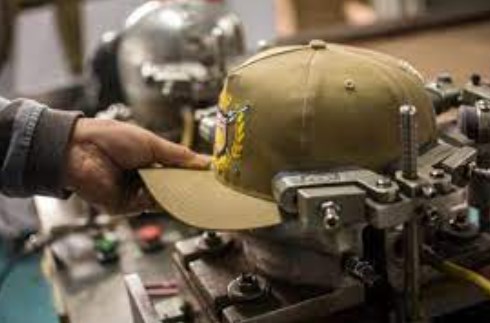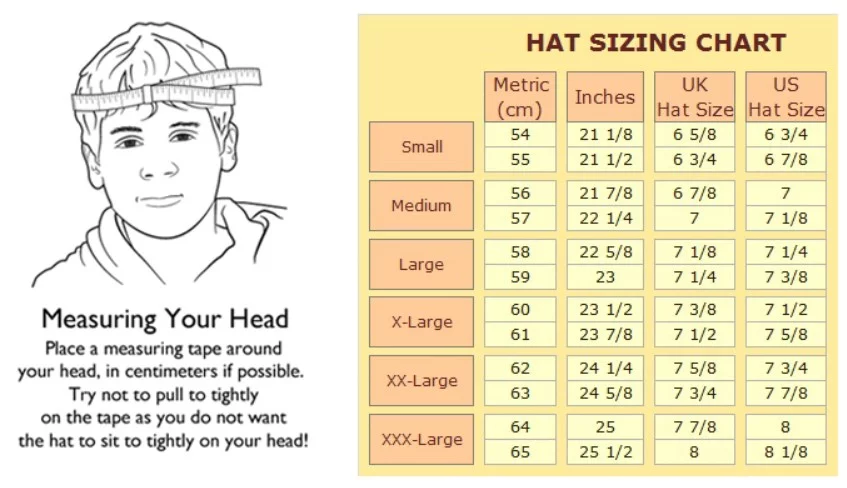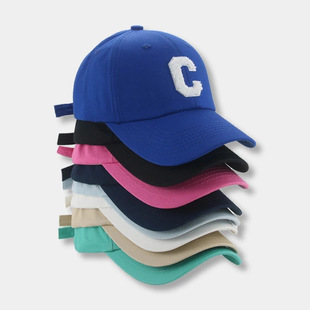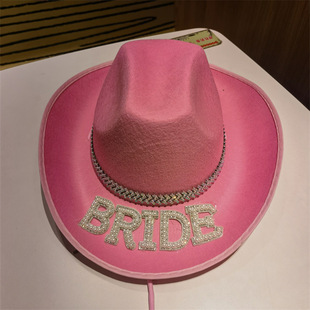Our website offers a comprehensive selection of hats from top hat manufacturers both in the USA and China. We specialize in a variety of styles, including custom baseball caps, trendy dad hats, and versatile bucket hats. Our collection includes renowned brands like American Made Cap Co and New Era hats, known for their quality and style. Whether you’re looking for traditional Chinese hats, such as the classic Chinese hat (often called chinese hat), or the latest in golf headwear like the raw golf hat, we have it all. Our hat manufacturing companies ensure top-notch quality and design. Plus, as a caps manufacturer, we offer unique customization options for both individual and bulk orders, making us one of the best hat companies in the market.Please contact us for a quote.
Contents
- 1 Hat Manufacturers from China: Unraveling the Thread
Hat Manufacturers from China: Unraveling the Thread

China Hat Materials
For a high-quality China hat, the materials used are crucial for both durability and aesthetics. Here are some common materials:
- Silk: Traditional and luxurious, silk is often used for the outer layer of more formal or ceremonial China hats. It’s lightweight, has a natural sheen, and is highly esteemed in Chinese culture.
- Bamboo: Bamboo is a classic material for China hats, especially those used for practical purposes like farming or fishing. It’s durable, lightweight, and provides excellent protection from the sun.
- Straw: Similar to bamboo, straw is a common material for everyday China hats. It’s inexpensive, breathable, and offers good sun protection.
- Brocade: For more ornate or decorative hats, brocade, a richly decorative shuttle-woven fabric, is often used. It can be made of silk or silk blends and features intricate, embroidered designs.
- Satin: Satin, known for its glossy surface and dull back, is another fabric often used for China hats, especially in fashion contexts. It adds a touch of elegance and is usually more affordable than silk.
- Cotton: Cotton is used for more casual and comfortable China hats. It’s soft, breathable, and easy to clean, making it a practical choice for everyday wear.
- Felt: Felt is sometimes used for winter or cooler weather China hats. It’s a pressed fabric that provides warmth and has a unique texture.
- Leather: For more durable and rugged styles, leather might be used. It’s less common but offers excellent protection and longevity.
Each material brings its own set of qualities and is chosen based on the intended use, style, and cultural significance of the hat.
Sustainable Hat Manufacturing
Sustainable hat manufacturing focuses on minimizing environmental impact and promoting ethical labor practices. Here are key aspects of this approach:
- Eco-Friendly Materials: Using materials that are renewable, biodegradable, or recycled is crucial. Options include organic cotton, bamboo, hemp, recycled polyester, and ethically sourced wool.
- Reduced Chemical Use: Limiting the use of harmful chemicals in dyes and treatments helps protect both the environment and workers. Natural dyes and low-impact chemical processes are preferred.
- Energy Efficiency: Implementing energy-efficient practices in manufacturing processes, such as using solar power, helps reduce the carbon footprint.
- Water Conservation: The textile industry is water-intensive. Sustainable hat manufacturing involves reducing water usage and ensuring clean water is returned to the environment.
- Waste Reduction: Minimizing waste in production through efficient cutting techniques and recycling scraps is essential. Some manufacturers also create hats from upcycled materials.
- Fair Labor Practices: Ensuring fair wages, safe working conditions, and ethical treatment of workers is a fundamental aspect of sustainability.
- Local Sourcing and Production: Local sourcing reduces transportation emissions. Additionally, producing hats locally can support local economies and reduce the carbon footprint associated with long-distance shipping.
- Durability and Repairability: Creating hats that are durable and easy to repair extends their lifespan, reducing waste and the need for frequent replacement.
- Transparent Supply Chains: Transparency in the supply chain helps consumers make informed decisions and holds manufacturers accountable for their environmental and social impacts.
- Certifications: Certifications like Fair Trade, Global Organic Textile Standard (GOTS), and OEKO-TEX can help consumers identify products that meet specific sustainability standards.
Sustainable hat manufacturing not only addresses environmental concerns but also aligns with growing consumer demand for ethically produced goods.
Trendy Fashionable Hats
Trendy and fashionable hats vary by season and current style influences, but here are some popular types that have been seen in recent trends:
- Bucket Hats: Revived from the 90s, bucket hats are back in fashion. They’re often seen in a variety of materials, from classic cotton to luxurious velvet, and patterns like floral or tie-dye.
- Fedora Hats: The fedora continues to be a stylish choice, offering a blend of classic and modern vibes. Wool fedoras are particularly popular in cooler months, while straw fedoras are a summer staple.
- Beanies: Beanies remain a favorite, especially in cooler weather. They come in various knits, colors, and styles, some featuring pompoms or embroidered details.
- Wide-Brimmed Hats: Wide-brimmed hats, particularly in straw or felt, are not only fashionable but also practical for sun protection. They add an element of sophistication to any outfit.
- Baseball Caps: A timeless classic, baseball caps are now seen in luxury fabrics like leather or suede, and often feature logos or trendy patterns.
- Berets: Berets have seen a resurgence, especially in wool or felt materials. They offer a chic, European flair to any outfit.
- Trilby Hats: Similar to fedoras but with a shorter brim, trilbies are often made from lightweight materials like straw or tweed, making them ideal for transitional seasons.
- Panama Hats: Traditionally made from toquilla straw, Panama hats are both elegant and functional. They’re perfect for warm weather and often seen in vacation wardrobes.
- Boater Hats: With their flat tops and wide brims, boater hats are a stylish choice for summer. They’re frequently adorned with ribbons for an added touch of elegance.
- Visors: Once a purely sporty accessory, visors have been reimagined in fashion contexts, often seen in vibrant colors or transparent materials.
These hats not only provide practical benefits like sun protection or warmth but also serve as key accessories to enhance and complete fashionable outfits. Trends in hats also often reflect broader fashion trends, incorporating current colors, materials, and design motifs.
Production Techniques of Handcrafted China Hats
The production of handcrafted China hats involves traditional techniques that have been passed down through generations. These methods emphasize meticulous craftsmanship, attention to detail, and the use of natural materials. Here are some key aspects of these production techniques:
- Material Selection: The process starts with selecting high-quality natural materials like bamboo, straw, silk, or cotton. For certain traditional hats, materials are chosen based on their flexibility, durability, and suitability for weaving or sewing.
- Preparation of Materials: Materials are often treated or processed before use. Bamboo or straw may be soaked, dried, and split into uniform strips. Silk and cotton fabrics are dyed using traditional methods, ensuring rich and lasting colors.
- Weaving: Many China hats are woven by hand. Artisans use various weaving techniques to create different patterns and textures. The precision of weaving determines the hat’s quality and durability. This step requires a high level of skill and patience, as the weaving must be tight and uniform.
- Shaping: After weaving, the hat is shaped while it is still pliable. This could involve stretching the hat over a mold or manually shaping it to achieve the desired form. Proper shaping is crucial for both the hat’s appearance and functionality.
- Sewing and Embellishment: For hats made from fabrics like silk or cotton, sewing is a significant part of the process. Patterns are cut and stitched together, often incorporating traditional Chinese embroidery or decorative elements. Embellishments like beads, tassels, or brocade may be added to enhance the hat’s aesthetics.
- Finishing Touches: The final steps involve refining the hat’s shape, trimming any excess material, and adding finishing touches such as inner linings, sweatbands, or ties for securing the hat.
- Quality Inspection: Each hat undergoes a thorough inspection to ensure that it meets the high standards of craftsmanship. This step is essential to maintain the reputation of the artisan and the quality of the handcrafted hats.
- Cultural Significance: Throughout the production process, cultural significance and traditional designs are often incorporated, reflecting the rich heritage and regional variations in Chinese hat-making.
The production of handcrafted China hats is not just about creating a functional item but is also an art form deeply embedded in Chinese culture and history. The skills required for these techniques are often taught within families or communities, preserving this valuable cultural heritage.
Cleaning and Storing China Hats
Proper cleaning and storing of China hats are essential to maintain their quality and prolong their life. Here’s a guide on how to care for these hats:
Cleaning
- Dust Regularly: Use a soft-bristled brush or a dry cloth to gently remove surface dust. This is particularly important for hats made of materials like bamboo or straw.
- Spot Cleaning: For small stains or spots, use a damp cloth with mild soap. Gently dab the stained area without soaking the material. This method is suitable for most fabric hats like cotton or silk.
- Avoid Harsh Chemicals: Do not use bleach or other harsh chemicals, as they can damage the natural fibers and colors of the hat.
- Dry Thoroughly: After cleaning, let the hat air dry completely away from direct sunlight or heat sources to prevent warping or fading.
- Professional Cleaning: For difficult stains or delicate materials like silk or brocade, consider professional cleaning services.
Storing
- Keep Away from Direct Sunlight: Store the hat in a cool, dry place away from direct sunlight to prevent fading and drying out of natural materials.
- Use a Hat Box: A hat box provides ideal protection from dust and maintains the hat’s shape. Ensure the box is large enough to prevent crushing or bending.
- Avoid Moisture: Keep the hat in a low-humidity environment to prevent mold or mildew, especially important for materials like straw or bamboo.
- Support the Shape: Stuff the crown with acid-free tissue paper to help the hat maintain its shape. For brimmed hats, avoid laying them flat for extended periods, as this can distort the brim.
- Avoid Hanging: Prolonged hanging can distort the shape of the hat, especially for heavier materials. It’s better to store them flat or in a hat box.
- Rotation: If you have multiple hats, rotate their use and storage positions to prevent prolonged stress on any one hat.
- Regular Inspection: Check the hats regularly for signs of damage or pests, especially if stored for a long time.
Proper care and storage not only keep your China hats looking great but also preserve their cultural and aesthetic value.
What Types of Hats Import from China?
China caters to global hat demands, offering an array of styles. Discover the charm of Dad hats, Baseball Caps, Sun Hats, Cowboy Hats, Beret Hats, Top Hats, Cocktail Hats, Fedoras, Bucket Hats, and Kids’ Hats. Each type tells a unique tale of style and tradition.
How Do Hat Sizes Work?
Unlock the secret to a perfect fit as we explore the nuances of hat sizes. Whether adjustable straps or precise measurements, understanding the head circumference is crucial in the hat-buying journey.

Where Are the China Cap Manufacturing Bases?
Embark on a virtual tour of China’s hat manufacturing hubs. Explore Guangzhou, Guangdong, Dongguan, Guangdong, Jinhua, Zhejiang, Ningbo, Zhejiang, and Qingdao, Shandong. Each city, a treasure trove of hat varieties at competitive prices.
How to Find Hat Manufacturers in China?
In a sea of hat manufacturers, navigating to the right supplier is an art. Uncover the best paths through wholesale hat suppliers, Google searches, trade shows, Yellow Pages, sourcing agents like huntersourcing, and B2B websites like Alibaba, Made-in-China, and more.
How to Choose the Best Supplier to Import Hats from China?
Selecting the ideal hat supplier requires consideration of factors like product line diversity, factory scale, design options, quality assurance, competitive pricing, professionalism, customization, MOQ, samples, lead time, and impeccable service.
Top 10 Best Caps Manufacturers in China
Explore the crests of China’s hat industry with the leading manufacturers:
- Guangzhou Zhuoyue Industry Co., Ltd
- Xiongxian Kaixin Cap Co., Ltd.
- Guangzhou Ace Headwear Manufacturing Co., Ltd.
- Shingrand Hats Manufacturer Co., Ltd.
- DongGuan Yescap Cap & Bag Manufacture Factory
- Yangzhou Chuntao Accessory CO., LTD
- Qingdao Guangjing Caps Co., LTD.
- H&G Yangzhou Manufacture Co., Ltd
- Dongguan Suntrends Apparel & Headwear Co., Ltd
- Baoding Huayi Hats Co., Ltd

Baseball Hat
Colors:Cyan, blue, black, white, rose red, beige etc
Embroidery logo
MOQ:10 pieces
With logo MOQ:100 pieces
Sourcing Price: $2.31 -$3.31

Hat
Colors:Cyan, blue, black, white, rose red, beige etc
Embroidery logo
MOQ:10 pieces
With logo MOQ:100 pieces
Sourcing Price: $2.31 -$3.31

Cowboy Hat
Colors:Cyan, blue, black, white, rose red, beige etc
Embroidery logo
MOQ:10 pieces
With logo MOQ:100 pieces
Sourcing Price: $2.31 -$3.31
FAQs about China Hat Manufacturers
- Q: Are Chinese hats only traditional in design?
- A: No, Chinese hat manufacturers blend tradition with modern trends, offering a diverse range of styles to suit every taste.
- Q: How do Chinese manufacturers ensure ethical sourcing?
- A: Many manufacturers prioritize ethical sourcing, conducting thorough audits and partnerships to ensure fair trade practices.
- Q: Are Chinese hats environmentally friendly?
- A: Yes, there is a growing trend towards eco-friendly hat manufacturing in China, with a focus on sustainable materials and processes.
- Q: What sets Chinese hat brands apart?
- A: Renowned for quality and style, Chinese hat brands often incorporate cultural elements, creating distinctive and globally appealing designs.
- Q: How can one explore and purchase hats from Chinese manufacturers?
- A: Many Chinese hat brands have online platforms, making it easy for global consumers to explore and purchase their creations.

